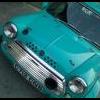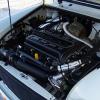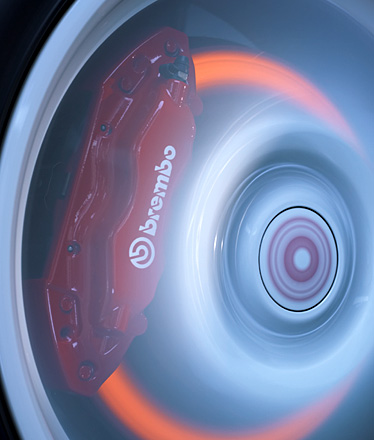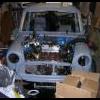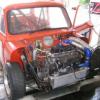ta da:
http://cgi.ebay.co.u...me=STRK:MEWA:IT
Shorrocks super charger geared for a 1 litre.
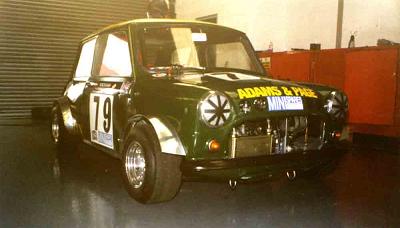
Lag and plenty of it.
Started by
Oldskoolbaby
, Aug 24 2005 05:46 PM
21 replies to this topic
#16

Posted 27 August 2005 - 02:33 PM
#17

Posted 27 August 2005 - 04:39 PM
Prehistoric and overpriced. Your much better off using a unit from the Bini, cheap as chips and a much more efficient design.
Phil.
Phil.
#18

Posted 27 August 2005 - 10:21 PM
Its the area of the inlet of the turbine housing, not the inlet manifold. The A/R ratio relates to the exhaust turbine and not the compressor. If you look at the diagram on my previous post it shows where the A/R ratio is calculated.Thats a huge help Mini sprocket. When you say the size of the inlet, do you mean the ports or inlet manifold size?
When choosing a turbo, you select it by the compressor first using the compressor map, again looking at my last post looking at the map for the RHF3 (revised version of the RHB3) the compressor map is denoted by the pale green area out lined with a dotted line. If the compressor is expossed to conditions outside of this 'map', compressor surge will result. Surge is the difference between air inlet and air outlet pressures( compressor lift) that exceeds the ability of the compressor to produce, resulting in a sudden back flow of high pressure air through the compressor where the whole process starts again, either until the conditions change for the better or until it destroys itself.
So to avoid compressor surge, stay within the map. Ideal turbo characteristics would be in the middle of this. This 'map' shows along the bottom the air flow and and up the side the pressure ratio( the pressure supplied by the compressor expressed as ratio of absolute pressure plus atmospheric pressure, for a boost pressure of 15 psi atmospheric 30psi absolute, the pressure ratio is 2, or a boost of 7psi atmospheric 22psi absolute, the ratio is 1.5)
Choose your turbo by plotting the air flow and boost requirements of your engine, aiming for the middle of the map and select the most suitable compressor - 3,4,5,55,6 and so on.
Now you have to select what Turbine A/R ratio to use. Bigger displacement engines by nature produce more exhaust gasses than smaller engines, so will have a bigger A/R housing to keep the exhaust gas velocities optimum and keeping down back pressures. Smaller engines using the same A/R housing will not produce enough gasses to keep the velocities up and drive the turbo ' on boost' untill the engine reaches higher rpm, hence a smaller A/R housing increasing exhaust gas velocities. Turbine maps are a little harder to come by and a lot more complicated than the compressor maps.
To complicate things even further, all this changes when the boost is increased and or different cam profiles are used. ( higher boost results in more exhaust gasses and may choke the engine if the A/R is on its limit - move to the next A/R)
I suspect Layland chose a big turbo and A/R so to put the boost higher up the rpm where the ecu would then boost to 7psi yet still produce what is considered a very low boost of 4 psi low down the rev range, because of the gearbox issues.
The whole turbo thing is very complex and there is no end of possabilities on how to achieve your goal. By all means buy any turbo you can get your hands on but don't expect it to do what you want before doing some research into what the characteristics of that turbo are. Not all T3 or T2 turbos are the same. Buying a new turbo from a manufacturer alows you to get the exact turbo for the characteristics of how you want your engine to run. The added bonus of this is that they will do all the complicated selections with what you tell them. The down side is it is an expensive option.
This is all getting a bit technical for what some are trying to achieve so I'll stop jabbering on. I suppose I'm just getting it straight in my head while I write this as well. Other than that, go with a known turbo that works on your particular engine, and I suspect Turbo Phill knows a bit about this :tongue:
This concludes todays lesson on turbocharger science. Tomorrow we will be going over lesson 1 and preparing for lesson 3 :smartass: Oh and I am no expert :nugget:
#19

Posted 28 August 2005 - 09:49 PM
you know ur sh*t on turbos lol :grin:
#20

Posted 29 August 2005 - 03:42 PM
and minisprocket lives just near me, i will know where to go when i need some help on engine mods, he knows everything!! 
talk about helpfull!!
talk about helpfull!!
#21

Posted 01 September 2005 - 10:12 PM
if you get hold of renault 5 T2 turbo that will do the trick
they reduce the lag significantly
they reduce the lag significantly
#22

Posted 04 September 2005 - 01:56 PM
I thuink the A/R ratio on the standard metro T3 was 0.26. Which is very small indeed.
Wil
Wil
0 user(s) are reading this topic
0 members, 0 guests, 0 anonymous users




